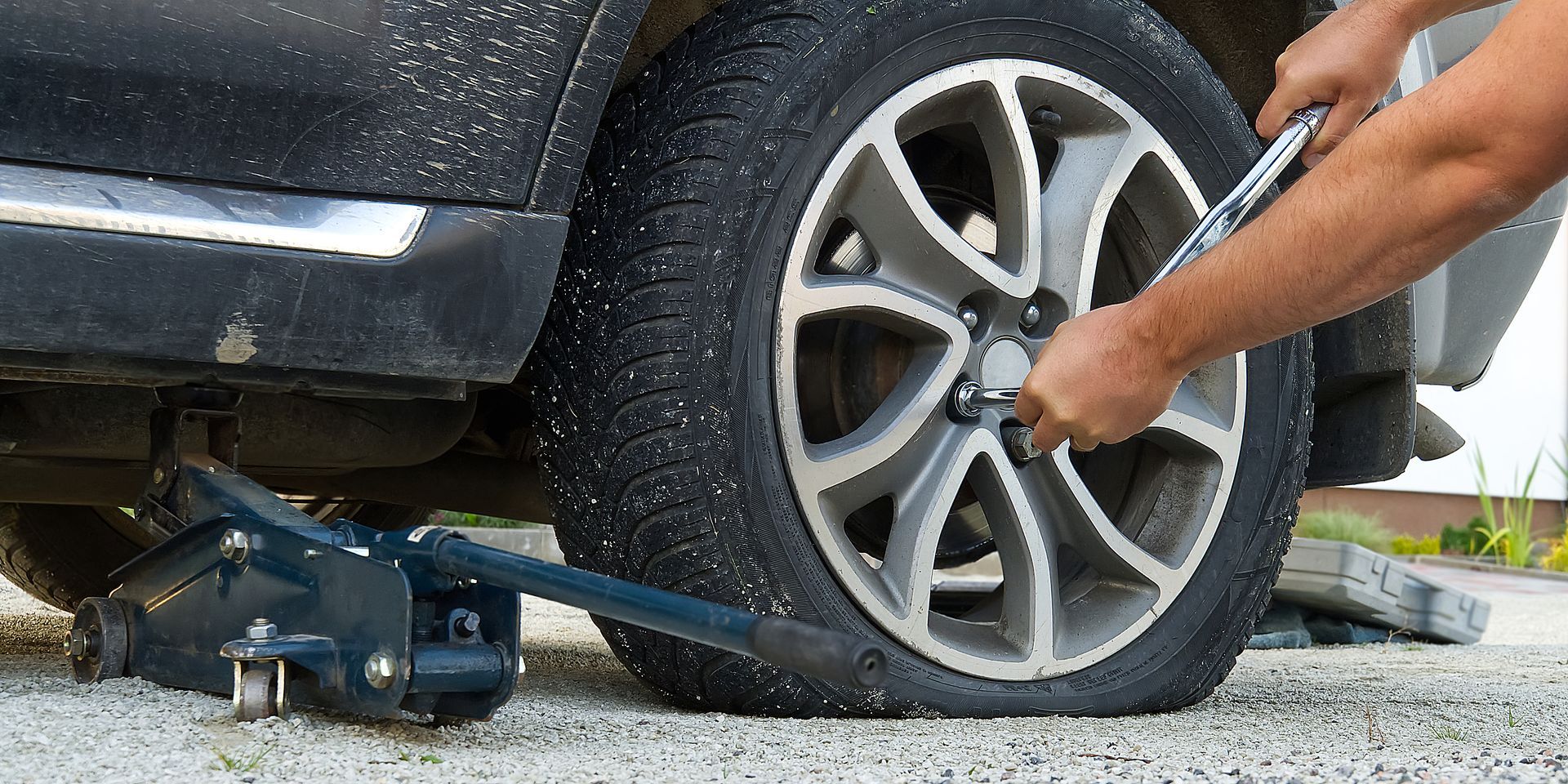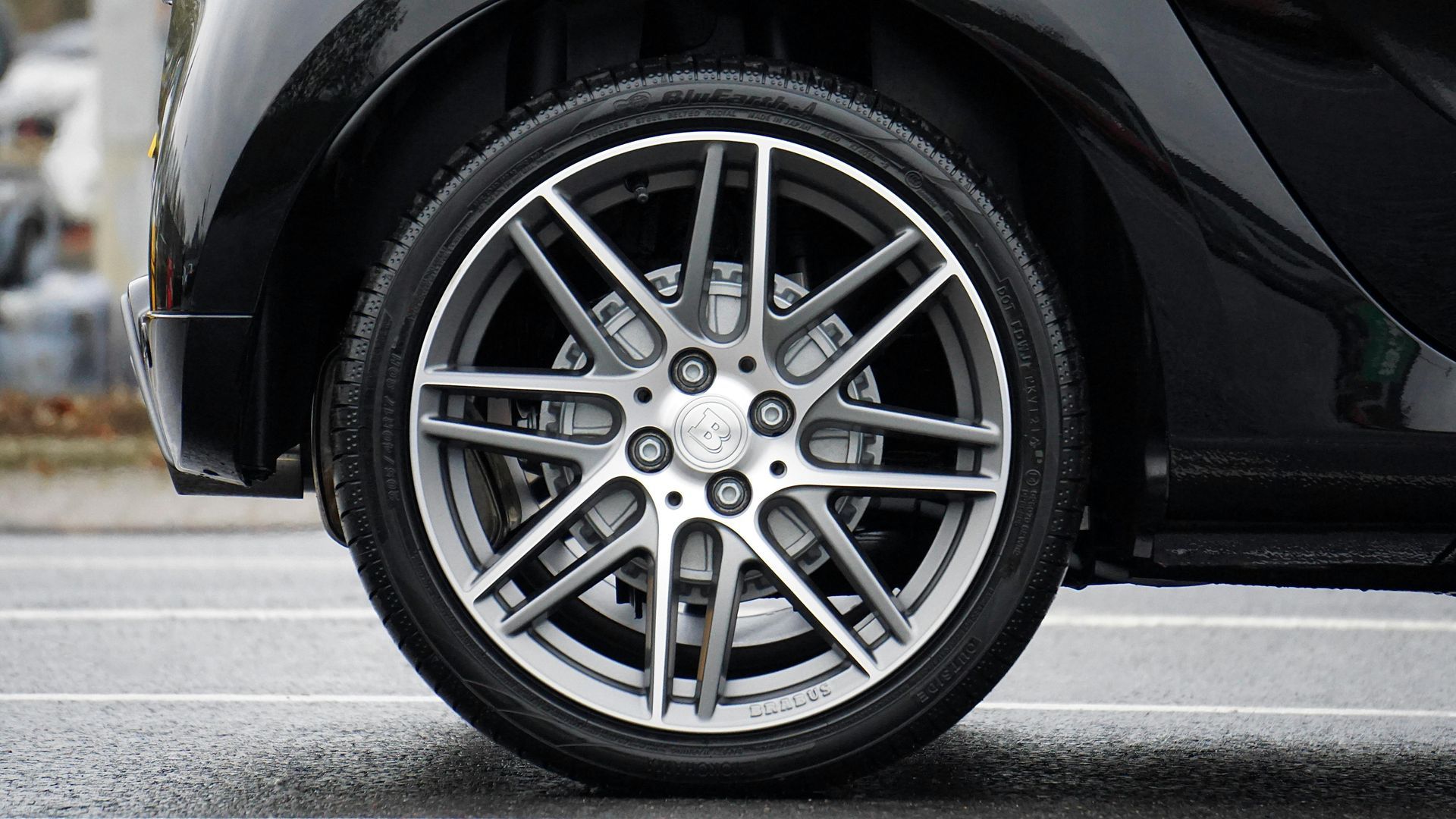Did you know that the average American driver experiences at least five flat tires in their lifetime? Whether it's from running over a nail or hitting a pothole, flat tires can be a frustrating and inconvenient experience. In such situations, tire plugs are often used as a quick and temporary fix. But how long can you actually drive with a plug in your tire before it becomes a safety concern?
Understanding the lifespan and safety limitations of driving with a tire plug is crucial for every driver. In this article, we will explore the factors that affect the duration of a tire plug and the potential risks associated with driving on a plugged tire. We will also discuss industry standards for tire repair and provide tips on maximizing the lifespan of a tire plug. So, let's dive in and discover just how long you can drive with a plug in your tire!
Key Takeaways:
- Driving with a tire plug is a temporary solution that provides immediate repair for flat tires.
- The lifespan of a tire plug depends on various factors, including the size and location of the puncture, the type of tire, and driving conditions.
- Driving with a plug in your tire can pose risks such as blowouts, loss of tire pressure, and compromised vehicle handling.
- Adhering to industry standards for tire repair is essential for safety.
- Regular tire maintenance and inspections can help identify issues with a tire plug and extend its lifespan.
Understanding Tire Plug Essentials
What Is a Tire Plug?
A tire plug is a small, cylindrical object made of rubber or other similar materials that is used to repair punctures in a tire. It is designed to seal the hole caused by a nail, screw, or other sharp object, preventing air from escaping and allowing the tire to maintain proper inflation.
Immediate Benefits of Using Tire Plugs
Using tire plugs offers several immediate benefits. Firstly, they provide a quick and easy solution for repairing a punctured tire, allowing you to get back on the road faster. Secondly, tire plugs are cost-effective compared to other repair methods, such as patching. Lastly, tire plugs are durable and reliable, providing a long-lasting repair that can withstand normal driving conditions.
The Difference Between Plugging and Patching a Tire
When it comes to repairing a punctured tire, there are two main methods: plugging and patching. While both methods aim to seal the puncture, they differ in how they are applied. Tire plugs are inserted directly into the puncture and act as a physical barrier to prevent air leakage. On the other hand, patching involves using a patch that is applied to the inner lining of the tire to cover the puncture.
While both methods can effectively repair a punctured tire , there are some key differences to consider. Tire plugs are generally considered a temporary solution and may not be suitable for larger or more severe punctures. Patching, on the other hand, provides a more permanent repair and is often recommended for larger punctures or those located in the sidewall of the tire.
Ultimately, the choice between plugging and patching depends on the nature of the puncture and the recommendations of tire professionals. It's important to consult with a qualified technician to determine the most appropriate repair method for your specific situation.
Assessing the Safety of Driving With a Tire Plug
When it comes to driving on a plugged tire, it is essential to understand the potential risks and the impact it can have on your vehicle's safety and handling. By assessing these factors, you can make informed decisions about the longevity and effectiveness of your tire repair.
The Risks of Driving on a Plugged Tire
Driving on a plugged tire poses certain risks that you need to be aware of. One of the primary concerns is the increased vulnerability to blowouts. A plug may not provide the same level of security as a proper tire repair, making your tire more susceptible to sudden failures and punctures. Additionally, driving on a plugged tire can lead to a loss of tire pressure over time, which can affect your overall vehicle performance and stability on the road.
How Tire Plugs Affect Vehicle Handling
It's important to note that tire plugs can have an impact on your vehicle's handling. Depending on the location and size of the puncture, a tire plug may alter the balance and stability of your tire. This can result in changes to your steering control, responsiveness, and overall driving experience. It is crucial to monitor how your vehicle handles after a tire plug repair and address any abnormalities promptly.
Industry Standards for Tire Repair
When it comes to tire repair, industry standards play a crucial role in ensuring your safety on the road. Professional service providers adhere to these standards to guarantee the effectiveness, durability, and long-term viability of tire repairs. It is vital to consult with a certified technician who follows industry protocols for tire plug repairs, as they have the knowledge and expertise to assess the safety and reliability of your plugged tire.
Understanding the safety implications of driving with a plugged tire is essential for every driver. By recognizing the risks, considering the impact on vehicle handling, and following industry standards for tire repair , you can make informed decisions to ensure your safety on the road.
How Long Can You Drive with a Plug in Your Tire?
If you find yourself with a tire plugged due to a puncture, you may be wondering how long you can safely continue driving without addressing the issue. While tire plugs are designed to provide temporary repairs, it's important to understand the limitations and consider the potential risks.
The duration for which you can drive with a plug in your tire depends on several factors:
- The size and location of the puncture: Smaller punctures located in the tread area are generally easier to plug and may have a higher chance of lasting longer.
- The quality of the plug and the repair process: Using high-quality plugs and following industry-standard repair procedures can contribute to a more durable repair.
- The driving conditions: Factors such as driving speed, terrain, and environmental temperatures can affect the longevity of a plugged tire.
It's essential to remember that a plugged tire is not a permanent solution, and industry standards recommend that it should be replaced or repaired with a patch as soon as possible. However, in certain situations, driving with a tire plug for a limited distance can be considered acceptable.
When driving with a plugged tire, it's important to monitor it closely for any changes in performance or signs of damage. Here are some guidelines to consider:
- Regular inspection: Periodically check the plugged tire for signs of leakage, tread wear, or bulges.
- Limit driving distance: Limit your driving to shorter distances and avoid high speeds, as excessive strain can compromise the integrity of the plug.
- Slow down: Reduce your speed and drive cautiously, especially when encountering rough roads or uneven surfaces.
- Professional evaluation: Consult a tire expert or a trusted mechanic to assess the condition of the plugged tire and determine if it requires immediate attention or replacement.
Remember, driving with a tire plug is a temporary solution and should not be viewed as a long-term fix. It's always best to have the tire repaired or replaced by a qualified professional to ensure your safety on the road.
Maximizing the Lifespan of Your Tire Plug
Proper maintenance and care can significantly extend the lifespan of your tire plug, ensuring optimal durability and safety on the road. By following a few simple tips and performing regular inspections, you can maximize the longevity of your tire plug, saving you time and money in the long run.
Tips for Extending Tire Plug Durability
Consider the following tips to help ensure the durability of your tire plug:
- Avoid rough terrains: When driving off-road or on rough terrain, your tire plug may be subjected to additional stress and strain. Whenever possible, avoid such conditions to minimize the risk of damage to the plug.
- Maintain proper tire inflation: Keeping your tires properly inflated can help distribute the weight evenly and reduce strain on the tire plug. Regularly check and maintain the recommended tire pressure for your vehicle.
- Monitor tire temperature: Excessive heat can weaken the rubber of your tire plug. Avoid prolonged exposure to high temperatures, such as parking in direct sunlight for extended periods.
- Balance and rotate your tires: Periodically balancing and rotating your tires can help prevent uneven wear and tear, reducing the strain on your tire plug.
Importance of Regular Tire Maintenance and Inspections
Regular tire maintenance and inspections play a crucial role in maximizing the lifespan of your tire plug. Consider the following practices:
- Check tire pressure: Monitor your tire pressure regularly to ensure it is within the recommended range. Low or overinflated tires can put unnecessary strain on the tire plug.
- Inspect for punctures or damage: Conduct visual inspections to check for any signs of punctures or damage to your tires. Promptly address any issues to prevent further damage to the tire plug.
- Rotate your tires: Regularly rotating your tires helps promote even wear and tear, preventing excessive strain on the tire plug and maintaining optimal performance.
- Replace worn tires: As your tires near the end of their lifespan, consider replacing them to ensure the safety and effectiveness of your tire plug. Worn tires can be more susceptible to damage and increase the risk of tire failure.
Signs That Indicate Your Tire Plug Needs Attention
To ensure the ongoing safety and effectiveness of your tire plug, it is important to be aware of the signs that may indicate an issue:
- Loss of tire pressure: If you notice a significant loss of tire pressure, this could indicate a problem with your tire plug. It is important to have it inspected and repaired promptly.
- Visible damage: If you can see any visible damage to the tire plug, such as cracks or detachment, it may signify that the plug is no longer secure. Seek professional assistance to address the issue.
- Persistent vibrations: If you experience persistent vibrations while driving, it could indicate an imbalance or damage to your tire plug. Have your tires and plug inspected to identify and resolve the issue.
- Uneven tire wear: Uneven wear patterns on your tires may indicate an underlying problem, such as a damaged or failing tire plug. Regularly inspect your tires for any signs of uneven wear.
By following these tips and staying vigilant about tire maintenance and inspections, you can ensure the optimal lifespan and durability of your tire plug, enhancing both your safety and peace of mind on the road.
Conclusion
After considering the factors and risks involved, it is clear that driving with a plug in your tire should be approached with caution. While tire plugs offer immediate benefits and can be a convenient solution for minor punctures, their lifespan is limited. It is crucial to remember that a tire plug is not a permanent fix and should not be relied upon for an extended period.
To ensure your safety and the longevity of your tire, it is recommended to have the tire professionally inspected and repaired as soon as possible after a plug is installed. Following industry standards for tire repair is essential in maintaining optimal safety on the road. Regular tire maintenance, including inspections and proper inflation, is also vital in prolonging the effectiveness of the tire plug.
In conclusion, while a tire plug can provide a temporary solution, it is important to prioritize your safety and consider the risks associated with driving on a plugged tire. Consult a professional tire technician for advice on the best course of action for your specific situation. By adhering to industry standards and practicing regular tire maintenance, you can ensure a safe and reliable driving experience. Our team at LugWrench Heroes in the Phoenix, AZ metro area offers tire repair and tire replacement services including plugging tires to save you money.
FAQ
How long can you drive with a plug in your tire?
The duration that you can drive with a plug in your tire depends on several factors, such as the size and location of the puncture, the type of tire, and the driving conditions. It is generally recommended to have the tire repaired or replaced as soon as possible to ensure optimal safety and prevent further damage. If you have a plug in your tire, it is advised to consult with a professional tire technician for an assessment and recommendation.
What is a tire plug?
A tire plug is a small device designed to seal punctures in a tire's tread area. It is typically made of a rubber or synthetic material and is inserted into the puncture hole to prevent air leakage and maintain tire pressure. Tire plugs are commonly used as a temporary solution for small punctures and offer a quick and convenient way to repair a damaged tire.
What are the risks of driving on a plugged tire?
Driving on a plugged tire can pose several risks. A plug is considered a temporary repair and may not provide a permanent solution for the puncture. There is a possibility of air leakage or even a blowout, especially if the plug fails to seal the puncture adequately. Furthermore, driving with a plugged tire can affect the handling and stability of your vehicle. It is important to have the tire properly repaired or replaced to ensure optimal safety on the road.
How long can you drive with a plug in your tire, considering tire plug lifespan?
The lifespan of a tire plug can vary depending on various factors, such as the quality of the plug, the conditions the tire is subjected to, and the expertise of the repair. While there is no specific time limit for driving with a plug in your tire, it is generally advised to view it as a temporary solution and have the tire repaired or replaced as soon as possible. It is recommended to consult with a professional tire technician for an accurate assessment and advice.
How can I extend the lifespan of my tire plug?
To maximize the lifespan of your tire plug, there are several steps you can take. Avoid driving on rough or uneven terrains that may put excessive stress and strain on the plug. Additionally, maintaining proper tire inflation and regular tire maintenance can help prevent further damage to the plug and ensure its effectiveness. It is also essential to be vigilant and address any signs of issues, such as loss of tire pressure or air leakage, which may indicate that the tire plug needs attention or replacement.














